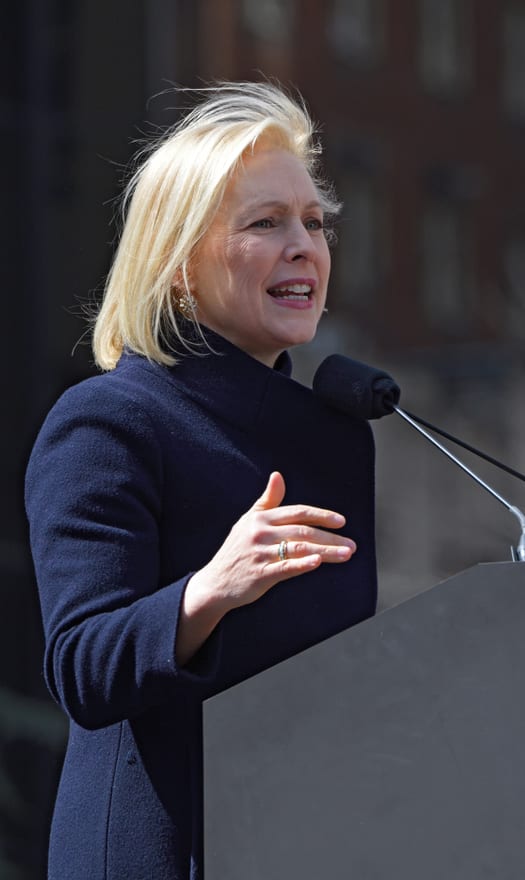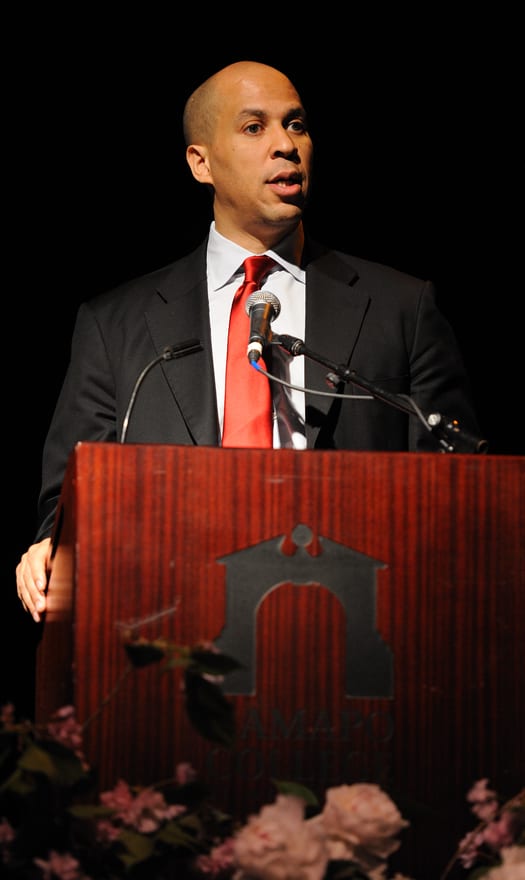Is Free College Possible?
College affordability has reached a crisis point in the United States. Forty-four million borrowers owe $1.5 trillion in student loan debt, and tuition is increasing almost eight times faster than real wages. With so many students, parents, and educators pleading for change, several 2020 presidential hopefuls have heeded the call to action.
In mid-April, Senator Elizabeth Warren put forward what is probably the most ambitious plan of the bunch: cancelation of up to $50,000 in student loans for households with incomes under $250,000 and free tuition for public colleges and universities. The projected cost is $1.25 trillion over 10 years.
Other Democratic candidates have endorsed similar proposals. Senator Bernie Sanders advocates free undergraduate education at public colleges and universities, fully funded historically black colleges and universities (HBCUs), and lower student loan interest rates. Senators Cory Booker and Kirsten Gillibrand have hinted at expansion of the Public Service Loan Forgiveness (PSLF) program.
Regardless of the specifics of each proposal, public debate has centered around two questions: First, how realistic is cancellation of student loan debt given the enormous price tag and current political climate? Second, do these proposals really address the root of the problem — the need to lower costs and increase equity?
Free (or At Least Debt-Free) College: The Full Outline of Proposals
Insecurity about student loans is one of those pesky American problems, like unaffordable healthcare and credit card debt, and it impacts both students and parents. In a recent Financial Security Survey from Bankrate, 25% of millennials listed student loans as their greatest financial regret, and 55% of parents said they rely on loans to pay for their children’s educations.
But at the same time Congress and the White House have lowered new student loan rates by 10% — a boon for new borrowers — President Trump has proposed ending the PSLF program. Trump’s 2020 budget proposal also includes a 10% decrease in funding for the U.S. Department of Education and an end to subsidized student loans, meaning students would have to pay interest on loans while enrolled in school.
Democratic proposals have focused on limiting or eliminating borrower exposure, although some proposals are more defined than others. So far, only Warren and Sanders have explicitly endorsed large-scale programs that aim to make college free or debt-free.
Democratic Proposals to Alleviate the Student Debt Crisis

- Cancellation of up to $50,000 in student loan debt for household incomes less than $100,000
- Substantial debt cancellation for household incomes between $100,000 and $250,000
- Private student loan debt eligible for cancellation
- Free public higher education for every American

- Partner with states to eliminate tuition at public colleges, universities, and trade schools for households making under $125,000
- Fully fund HBCUs
- Lower interest rates on student loans
- Programs funded by fees on Wall Street trades

- Refinance student loans at lower interest rates (as low as 4%)
- Make community college tuition free
- “Work toward” eliminating tuition and fees at public colleges and universities
- Expand the Public Service Loan Forgiveness program

- Make community college tuition free
- Refinance existing student loans at lower interest rates
- Savings accounts for every baby born in the U.S. (up to $4,000 for lower-income families) that can be spent on higher education
- Forgive student loan debt for teachers and expand the Public Service Loan Forgiveness program
Sources:
Elizabeth Warren: Medium. Image source: Maverick Pictures / Shutterstock.com
Bernie Sanders: Bernie 2020; NBC News. Image source: Crush Rush / Shutterstock.com
Kirsten Gillibrand: Gillibrand 2020; Forbes. Image source: Ron Adar / Shutterstock.com
Cory Booker: NBC News; Forbes. Image source: Eugene Parciasepe / Shutterstock.com
Not everyone on the left is impressed by these sweeping proposals. Adam Looney, the director of the Center on Regulation and Markets at the Brookings Institution, has characterized Warren’s plan as “regressive, expensive, and full of uncertainties.”
“The simple fact is that it’s hard to design a progressive and coherent loan relief policy,” Looney says. One reason is that it requires policymakers to decide who deserves relief and who doesn’t. For example, individuals who paid off their college debts would not benefit at all from Warren’s loan forgiveness proposal.
Moreover, loan forgiveness depends on a fundamental value judgment that college graduates — who already have an economic advantage — deserve a titanic-scale entitlement, while those who didn’t go to college are left without a piece of the pie.
Of course, the second half of Warren’s proposal is free tuition at public colleges, which could eliminate debt concerns entirely and incentivize lower-income Americans to earn degrees. The way Warren’s plan is structured, however, may widen economic disparities in the short term. According to the Brookings report, the bottom 60% of American households would receive only 34% of the benefit of her proposal; the bottom 20%, only 4%.
In short, college remains a privilege that mostly wealthier Americans enjoy. Ninety percent of children from the highest-earning families attend college compared to only 35% from lower-income families. Shifting $640 billion dollars — the sum of Warren’s loan cancellation proposal — would benefit many struggling Americans, but would also be a subsidy for the well-off.
Student Debt Relief Programs and Alternative Proposals for Free College
So long as Republicans control the Senate and White House, Democratic proposals for large-scale loan forgiveness are unlikely to become law. Fortunately, Americans can still take advantage of existing student debt relief programs. For example, federal income-driven repayment plans cap monthly payments at 10% of disposable income and may forgive loans after 20 years.
If President Trump’s 2020 budget is passed by Congress, the four income-based repayment plans that exist currently would be consolidated into one. For undergraduates, payments would be capped at 12.5% of income, and any remaining debt would be forgiven after 15 years — five years earlier than under current law.
Existing Student Debt Relief Programs
- Eligible applicants must have student debt higher than annual discretionary income
- Eligible for loan forgiveness after repayment period
- Payments are 10% of discretionary income.
Source: U.S. Department of Education
In addition to maintaining or expanding current student debt-relief measures, such as the PSLF program, some Democratic candidates have more creative ideas. In an attempt to narrow the racial-wealth gap, Booker introduced a bill for baby bonds of up to $4,000 that could be spent on higher education. Beto O’Rourke, the former congressman from Texas, supports debt-free college for those working in high-need fields and underserved communities.
A more conventional solution to America’s student debt crisis may come from overseas, according to Susan Dynarski. A professor of education, public policy, and economics at the University of Michigan, Dynarski points out in The New York Times that the United States isn’t the only country where students borrow heavily to pay for school.
Even in Sweden, where tuition is free, over 70% of students borrow to pay for living expenses. The only difference is that loan repayments are scheduled over a longer period — 25 years — and gradually increased. In Germany, the repayment period is 20 years, and it’s 30 years in the United Kingdom.
In Australia, where students borrow as much as Americans for college, borrowers don’t pay anything until their income reaches a certain threshold, and payments are fixed automatically to income without the need for convoluted repayment programs.
Achieving Student Debt Relief for Low-Income Graduates
Proposals concerning free college for all and student debt forgiveness are admirable in their scope and ambition. Before these promises can be fulfilled, however, there are simpler and quicker measures to making student loans hurt less, including automatic income-based repayment and longer repayment terms.
It’s also worth remembering that the distribution of benefits under some proposals skews heavily toward wealthier Americans. Proposals that are narrower in scope could target graduates who are lower income, who work in high-need fields (such as education or nursing), or who work in underserved areas. Preserving and expanding the PSLF program — a program that currently denies around 99% of applicants under the Trump administration — is also integral to maintaining basic public trust.
Lastly, students who need help repaying loans should be sure to take advantage of existing programs. The resources below can help ease the burden of earning a degree without depending on the promises from 2020 presidential hopefuls.
Student Debt Relief Resources
Explore More College Resources

How to Choose Your College Class Schedule
Learn how to create the best class schedule each semester by considering important academic and nonacademic factors.

by Steve Bailey
Updated March 22, 2023

Full-Time vs. Part-Time Student: What’s the Difference?
Discover the challenges and opportunities full-time vs. part-time students face and get tips on which college experience is right for you.

by Marisa Upson
Updated October 12, 2023

Summer Semester: When Does It Start? And Should You Enroll?
School’s out — or, rather, in — for summer. Discover the pros and cons of enrolling in an optional summer semester in college.

by Anne Dennon
Updated March 20, 2023